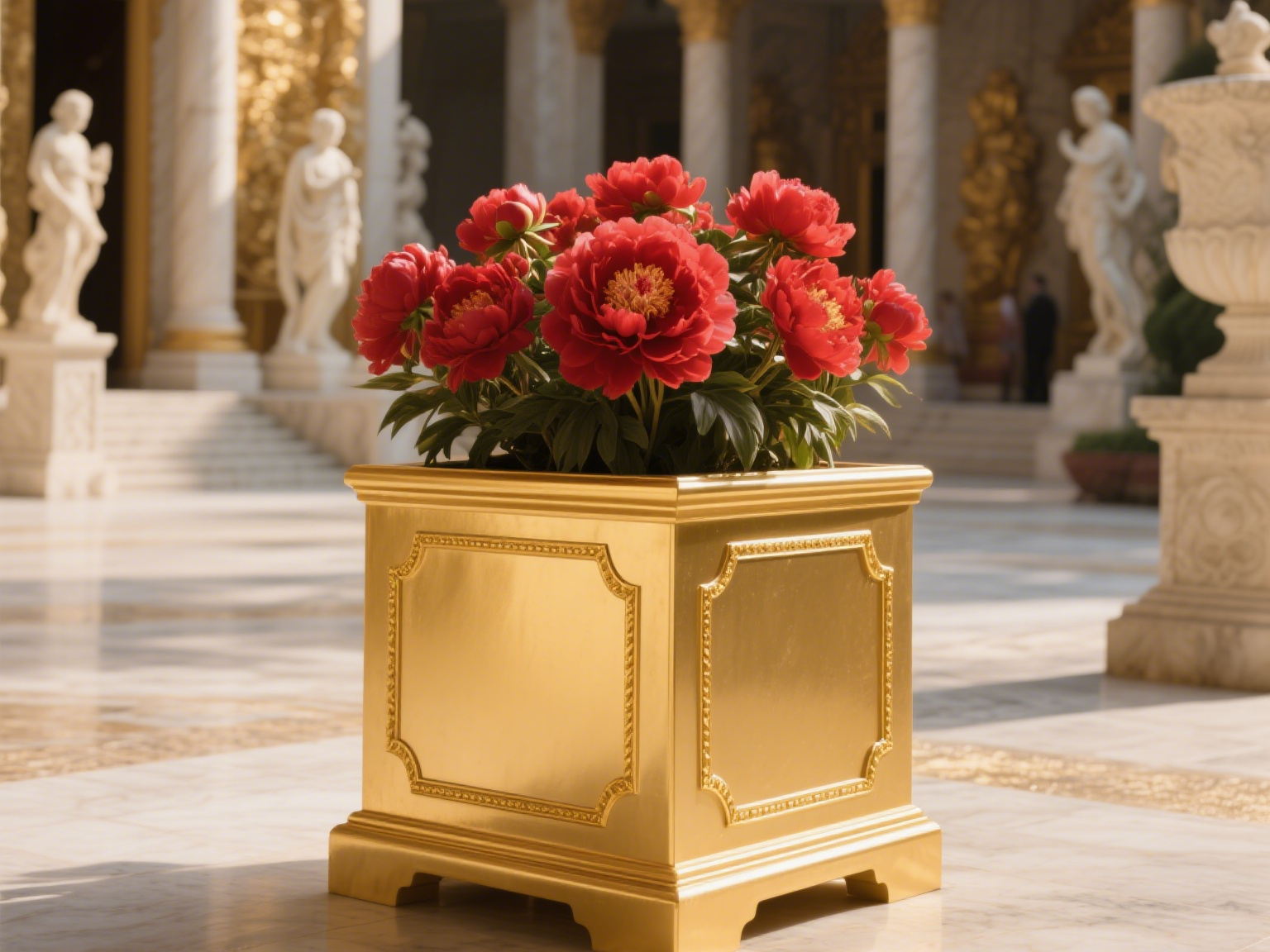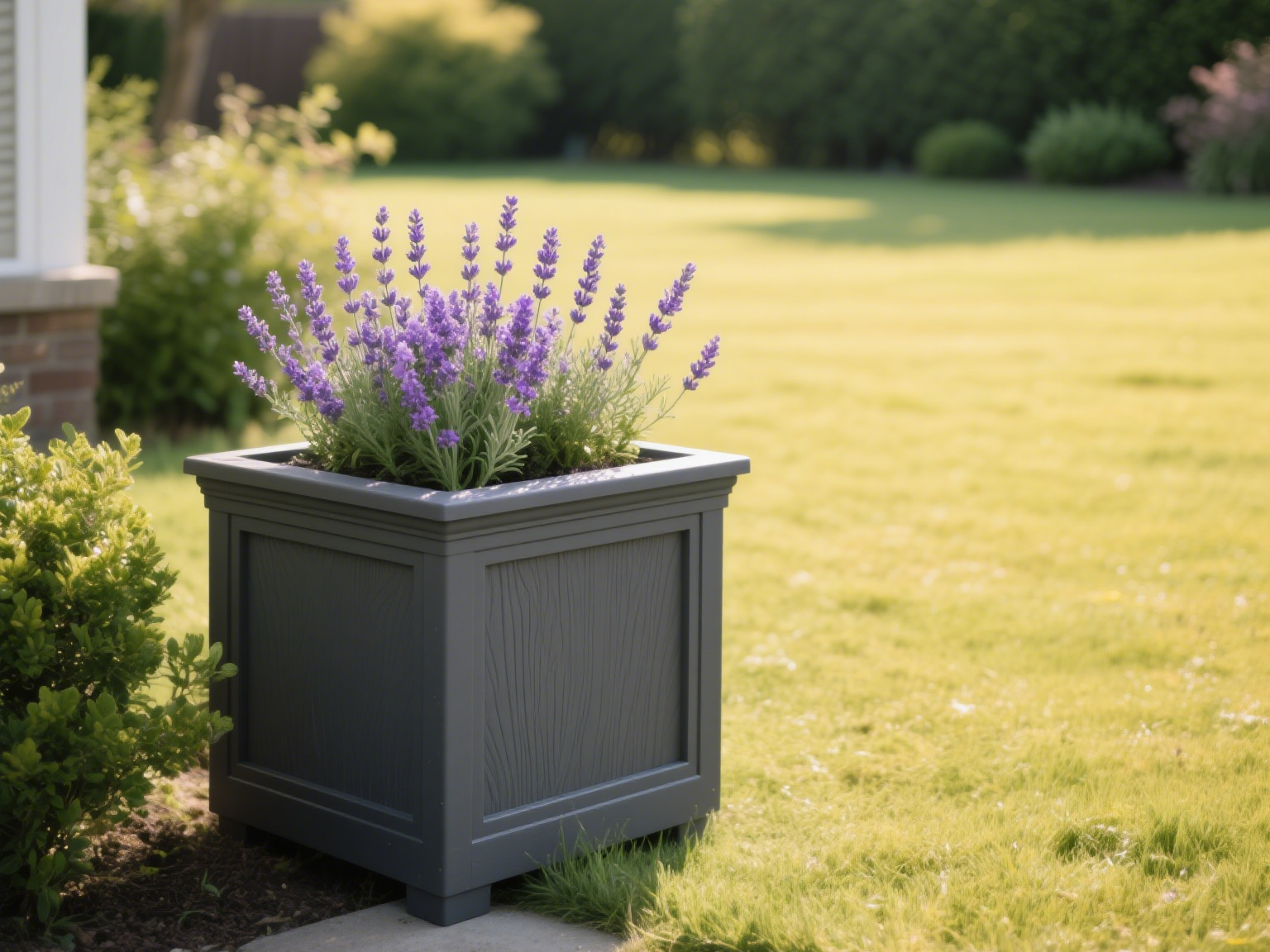Strolling through urban streets, from community paths to commercial plazas, colorful and uniquely designed PVC flower boxes catch the eye. These unassuming containers are quietly transforming the urban landscape with their unique charm, injecting vitality into the concrete jungle and reshaping the relationship between people, cities, and nature.
Traditional flower box materials have their drawbacks—wood rots, iron rusts, and plastic ages. PVC flower boxes, however, stand out for their superior material properties. Lightweight yet durable, they are easy to transport and install while withstanding heavy loads, remaining steadfast even in typhoons. Their weather resistance ensures color and structure remain intact in extreme temperatures, from freezing winters to sweltering summers. Environmentally friendly, they emit no formaldehyde during production and are 100% recyclable. Advanced injection molding techniques allow them to mimic wood, stone, or metal textures and customize embossed patterns, catering to aesthetic needs in diverse settings. According to a Shenzhen municipal greening project, using PVC flower boxes reduced comprehensive costs by over 60% compared to traditional ones over five years.

In an old Hangzhou neighborhood, light gray PVC flower boxes replaced rusty iron railings. Equipped with automatic irrigation systems, residents adopted planting areas, growing vegetables like peppers and tomatoes alongside flowers such as roses and succulents. In autumn, the scent of osmanthus fills the air, drawing neighbors to chat by the flower boxes and fostering connections. The community even held a “Flower Box Creative Competition,” where children’s graffiti and elderly calligraphy transformed cold building facades into art galleries. In Chengdu’s Taikoo Li, concrete-textured PVC flower boxes with pink muhly grass and salvia create a dreamy landscape, attracting crowds of visitors. Commercial data shows foot traffic and nearby store revenue increased significantly after their installation. In public transportation, Tokyo’s Shinjuku Station features herb-filled flower boxes that soothe commuters, while BRT stations in Chinese cities integrate flower boxes with seating and charging functions, enhancing the travel experience.
PVC flower boxes offer more than decoration; they contribute to urban ecology. In Chongqing’s mountain trails, trapezoidal PVC flower boxes form “green waterfalls,” with water-storage structures ensuring drought-resistant plants thrive and greening bare slopes. At a Suzhou wetland park, waterfront flower boxes act as ecological filters, reducing pollution and providing habitats for wildlife, aiding urban ecological restoration.

As technology and culture converge, the future of PVC flower boxes is full of possibilities. Smart flower boxes can monitor soil moisture and deter uncivilized behavior via AI cameras. Cultural landmarks are integrating regional motifs into designs, turning flower boxes into carriers of local heritage. Shared rental services allow businesses to customize logo-printed flower boxes with seasonal plant rotations, cutting costs while boosting brand image.
Each PVC flower box is a green note in the symphony of urban life, playing a melody of harmony between humanity and nature. They are “green punctuation marks” in the city, adding pauses and poetry to hurried lives and allowing people to encounter natural beauty amid the hustle and bustle. The next time you pass a PVC flower box on the street, take a moment to appreciate the warmth and beauty hidden in these urban corners—and feel the pulse of a city growing in harmony with nature.
